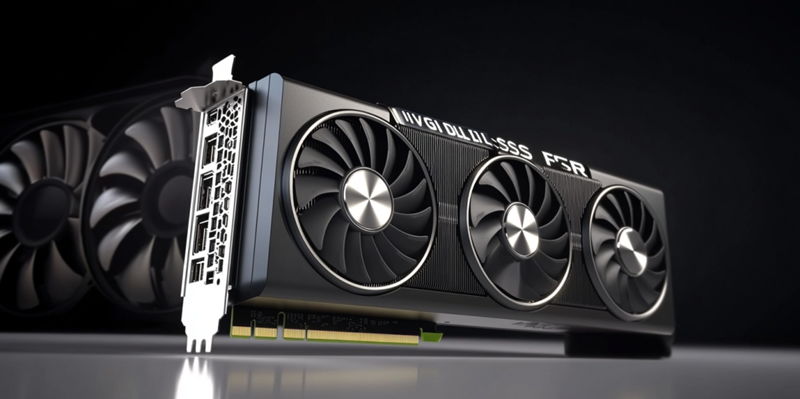When it comes to choosing a new GPU, gamers are often faced with a critical decision: Nvidia or AMD? Both companies offer advanced upscaling technologies—Nvidia’s Deep Learning Super Sampling (DLSS) and AMD’s FidelityFX Super Resolution (FSR)—that promise to enhance gaming performance. As graphics rendering becomes more sophisticated, the need for effective upscaling methods has grown, making the choice between DLSS and FSR even more pivotal. To help navigate this complex landscape, this article delves into the advantages and considerations of both technologies.
Nvidia’s Technological Prowess
Nvidia has long been a dominant force in the GPU market, setting high standards with its RTX 4000 series, particularly the RTX 4090. Known for its unparalleled gaming performance, this GPU is a top choice for gamers seeking the best experience. Anticipation is also building around the upcoming RTX 5000 series, with much attention on the successor to DLSS 3 and its potential enhancements. Specifically, DLSS, especially in its third iteration with Frame Generation, has significantly boosted in-game frame rates, notably at higher resolutions with ray tracing enabled.
DLSS leverages artificial intelligence to upscale lower-resolution images, providing smoother and more visually appealing gameplay. However, an essential point of contention among gamers is DLSS’s exclusivity to Nvidia’s newer GPU models, such as those in the RTX 4000 series. This exclusivity has detractors within the gaming community, who argue that broader accessibility could be feasible and beneficial. Despite Nvidia’s technical prowess, it is crucial to stress that GPU choices should not hinge solely on access to DLSS, especially considering the high cost of Nvidia’s premium cards like the RTX 4080 Super and 4090.
In other words, while the technological advancements in Nvidia’s DLSS bring undeniable benefits, they come at a price. High-end Nvidia cards are not necessarily the best choice for every gamer, particularly those with budget constraints. Therefore, it is essential to consider the overall cost, performance, and value of GPUs in the context of your gaming needs and financial priorities. Evaluating these factors can help gamers make more informed choices rather than focusing solely on one standout feature.
AMD’s Competitive Edge
AMD’s Radeon GPUs, notably the RX 7900 XT and XTX, have garnered attention for their strong performance in various games. These GPUs offer a compelling alternative to Nvidia’s offerings, especially when considering the price-to-performance ratio. One of AMD’s strategic moves has been to make FSR an open-source platform, accessible to a broader range of hardware—including Nvidia GPUs and Intel’s integrated graphics. This strategy underscores AMD’s commitment to enhancing the gaming experience for a wider audience, allowing more gamers to benefit from upscaling technologies regardless of their hardware.
FSR, while perhaps not as advanced as DLSS in certain technical aspects, still delivers significant performance boosts. AMD’s competitive pricing, extensive VRAM, and open-source approach to FSR present a robust alternative to Nvidia’s offerings. Crucially, this open-source method means that FSR can be implemented across a wider variety of setups, benefiting a broader spectrum of gamers. This inclusivity makes AMD’s GPUs attractive, especially for those who prioritize affordability and broad compatibility over cutting-edge exclusivity.
An essential aspect that’s coming to light is the burgeoning role of upscaling technologies like DLSS and FSR in the future of PC gaming. Both Nvidia and AMD are leaning towards AI-driven upscaling methods, showing a clear trend towards leveraging AI for enhanced gaming experiences. This advancement can help bridge the gap between high-end and more affordable GPUs, offering noticeable performance improvements across the board. However, it’s important to monitor how these technologies evolve and consider their implications on the gaming experience as a whole.
The Role of Upscaling Technologies
Upscaling technologies like DLSS and FSR have gained momentum in the gaming industry, becoming increasingly important for improving gaming performance. These technologies are particularly beneficial for games that are not well-optimized at launch. Recent high-profile games such as "Hogwarts Legacy," "Star Wars Jedi: Survivor," "Dragon’s Dogma 2," and "Starfield" have experienced optimization issues at release. These titles often rely on upscaling methods to provide improved performance post-launch, highlighting the critical role upscaling plays in the current gaming landscape.
However, while these technologies offer significant benefits, there is a potential downside to their increasing reliance. The availability of effective upscaling methods could encourage game developers to release poorly optimized games, relying on post-launch patches and upscaling techniques to rectify performance issues. This trend raises important concerns about the future quality of game releases and the over-reliance on upscaling technologies. Gamers may face scenarios where upscaling methods are insufficient to mitigate performance issues, emphasizing the need for powerful, well-specified GPUs to handle demanding games.
In these scenarios, the inherent power and specifications of the GPU become paramount, making the price-to-performance ratio of AMD’s GPUs, particularly the RX 7900 XTX, highly relevant. Despite the lack of access to DLSS, these GPUs offer robust performance, challenging the notion that DLSS is a must-have feature. It’s crucial to weigh various factors, including the eventual performance benefits and the worthy consideration of overall cost and accessibility.
Broader Accessibility and Market Dynamics
When it comes to selecting a new GPU, gamers often face the crucial decision of choosing between Nvidia and AMD. Both companies provide cutting-edge upscaling technologies that aim to improve gaming performance. Nvidia’s Deep Learning Super Sampling (DLSS) and AMD’s FidelityFX Super Resolution (FSR) are designed to enhance the visual experience by making lower-resolution images appear sharper and more detailed. As graphics rendering becomes increasingly sophisticated, the demand for effective upscaling methods has risen, making the choice between DLSS and FSR even more significant for gamers. This decision is critical, as the right choice can significantly impact overall gaming experience and performance. To help you navigate this complex landscape, this article explores the benefits and considerations of both technologies, providing insights into how each one fares in real-world applications. Whether it’s frame rate boosts, image quality, or compatibility with various games and hardware, understanding DLSS and FSR helps make an informed choice.

